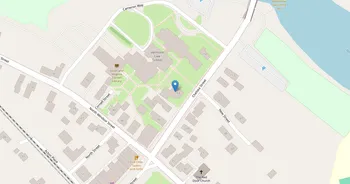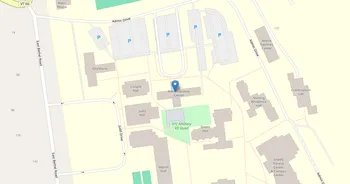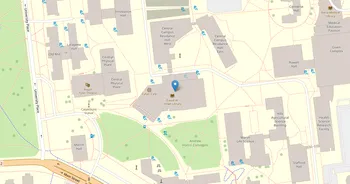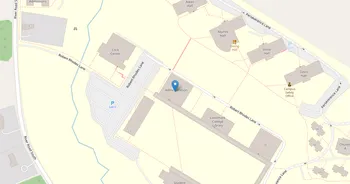Sterling College : Overview, Courses, Scholarships & Rankings
About Sterling College
Set on a classic Vermont green, Sterling College is known for roll-up-your-sleeves learning in the natural and working landscapes. Academics lean into ecology, sustainable agriculture, and the ties between people, land, and food. Classes spill into fields and forests; a working farm and gardens serve as living classrooms. Students find close advising, a small library and labs, field-study tools, and practical support that feels personal.
Life here runs on community. Shared meals, campus work, and seasonal farm traditions shape a culture that's earnest, collaborative, and a little muddy in the best way. Weekends mean nearby trails, lakes, and a town that welcomes student projects. Career prep centers on real experience through placements with farms, conservation groups, and food nonprofits, guided by faculty mentors and local practitioners.
Key Institutional Details
Contact & Profile
Academic & Institutional
Academic Programs & Fields of Study
Sterling College offers 5 degree programs across 5 major academic fields, graduating approximately 25 students annually. The most popular fields by graduate volume are Agriculture (1 programs, 10 graduates), Biological Sciences (1 programs, 7 graduates), Kinesiology (1 programs, 5 graduates), Natural Resources (1 programs, 2 graduates) and Liberal Arts (1 programs, 1 graduates). Explore program details, award levels, and graduate demographics below.
Agriculture (1 programs, 10 graduates)
Agricultural Sciences, Animal Husbandry and Veterinary Medicine
| Program Name | Graduates | Gender Distribution | Award Levels | CIP Code |
|---|---|---|---|---|
| Agroecology and Sustainable Agriculture | 10 |
|
Bachelor's
|
01.0308 |
Biological Sciences (1 programs, 7 graduates)
Life Sciences, Biotechnology and Biomedical Research
| Program Name | Graduates | Gender Distribution | Award Levels | CIP Code |
|---|---|---|---|---|
| Ecology | 7 |
|
Bachelor's
|
26.1301 |
Kinesiology (1 programs, 5 graduates)
Exercise Science, Sports Medicine and Physical Recreation
| Program Name | Graduates | Gender Distribution | Award Levels | CIP Code |
|---|---|---|---|---|
| Outdoor Education | 5 |
|
Bachelor's
|
31.0601 |
Natural Resources (1 programs, 2 graduates)
Environmental Science and Natural Resource Management
| Program Name | Graduates | Gender Distribution | Award Levels | CIP Code |
|---|---|---|---|---|
| Environmental Studies | 2 |
|
Associate's
|
03.0103 |
Liberal Arts (1 programs, 1 graduates)
Liberal Arts Education, General Studies and Humanities
| Program Name | Graduates | Gender Distribution | Award Levels | CIP Code |
|---|---|---|---|---|
| Liberal Arts and Humanities | 1 |
|
Bachelor's
|
24.0199 |
Admission Requirements & Test Scores
Comprehensive overview of admission criteria, standardized test score ranges, and application requirements for prospective students at Sterling College.
Application Requirements
Data based on IPEDS for 2022-2023 academic year. Test score ranges represent the middle 50% of admitted students (25th-75th percentile). Requirements may vary by program.
Tuition, Fees & Estimated Costs
Overview of tuition rates, housing, and other annual education expenses for undergraduate and graduate students
Financial Aid & Student Support
Summary of scholarships, grants, student loans, and financial aid statistics for undergraduate students
Student Success Metrics
Graduation rates and post-graduation earnings to help assess student outcomes and long-term value of education.
Loan Burden & Repayment Outcomes
Breakdown of loan repayment rates and student debt levels by income and dependency status.
Frequently Asked Questions
Find answers to the most common questions about Sterling College
How much does it cost to attend Sterling College?
The annual tuition at Sterling College is $40,760 for in-state students. When including room and board, books, and other expenses, the total estimated cost is approximately $54,410 for in-state students. Additional costs include room and board $10,950 and books and supplies $1,200.
Data based on IPEDS program completions for 2022-2023 academic year. Tuition and cost estimates are approximate and may not include all fees, personal expenses, or transportation costs.
What academic programs and degree levels does Sterling College offer?
Sterling College offers 5 academic programs across 5 major fields of study, with available degree levels: Bachelor's.
Most popular program areas include:
- Agricultural Sciences, Animal Husbandry and Veterinary Medicine (1 programs)
- Life Sciences, Biotechnology and Biomedical Research (1 programs)
- Exercise Science, Sports Medicine and Physical Recreation (1 programs)
- Environmental Science and Natural Resource Management (1 programs)
- Liberal Arts Education, General Studies and Humanities (1 programs)
Data based on IPEDS program completions for 2023-2024 academic year. Numbers reflect programs where students graduated, not all offered programs.
What is the acceptance rate for Sterling College?
Sterling College has an 92.3% acceptance rate and a 14.6% yield rate, making it moderately selective.
Admission statistics breakdown:
- Total applicants: 52
- Students admitted: 48
- Students enrolled: 7
Data based on IPEDS for 2022-2023 academic year. Admission statistics may vary by program and application cycle.
What financial aid and scholarships are available at Sterling College?
Sterling College provides financial aid to 10% of first-time, full-time students, with average grants of $21,515 and average loans of $2,750.
Average financial aid amounts by type:
- Pell grants: $5,470
- State/Local grants: $11,903
- Institutional grants: $16,528
- Federal loans: $2,750
The university supports 10 students with grants and 2 students with loans annually.
Data based on IPEDS for 2022-2023 academic year. Financial aid amounts and percentages may vary by program, enrollment status, and individual circumstances.
What is the average salary for Sterling College graduates?
Sterling College graduates earn a median salary of $27,109 after 6 years and $30,573 after 10 years.
Data based on IPEDS for 2022-2023 academic year. Salary data reflects graduates who received federal financial aid (approximately 60% of all graduates). Actual earnings may vary significantly based on program, location, and individual circumstances.
Related Universities




Found something useful? Help others discover it too! Share with friends, on social media, or save for later - every share helps someone find the information they need.